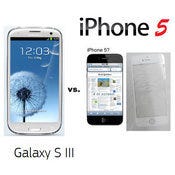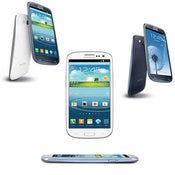</i>Apple has invested more in design patents than many other tech companies since it launched the iPhone in 2007. Is that good news for consumers?


Apple iPhone 5 Vs. Samsung Galaxy S III: What We Know
Apple iPhone 5 Vs. Samsung Galaxy S III: What We Know (click image for larger view and for slideshow)
Apple, unlike other technology companies that rely on utility patents to protect their innovations, has relied to an increasing degree on design patents in recent years.
By forging the modern smartphone layout first and patenting its screen-centric design, Apple now finds itself in the enviable position of being able to force competitors to tread warily in their layout of smartphone elements.
Before the iPhone, part of the cell phone's face was given over to an alphanumeric keypad. When the iPhone first appeared in January 2007, some skeptics mocked its dark glass face--the dark oily pond, in the words of Apple designers. With a touch screen, the software at work in the heart of the phone would allow to see whatever you wished in its depths, as opposed to being stuck on a standard keypad.
Furthermore, Apple perfected the precision and responsiveness of capacitive resistance screens. Previous touch screens had needed to flex or stretch slightly in response to a human touch to generate an electrical impulse to be captured and acted on by the user interface. The iPhone showed the potential of the new screens by increasing their size, giving them a hard glass surface that responded to light finger gestures, and using them as a showcase for content as well as keys.
[ Learn how competitors will need to respond to Apple's patent win. See Samsung's Prospects Dim Vs. Apple; What Next, Android Designers? ]
Apple's CEO, the late Steve Jobs, boasted that he had "patented the hell out of the iPhone," and not because Apple had invented the underlying touch screen technologies. In many cases it hadn't. But it had pulled those technologies together into a distinctive design that slowly, then with gathering force, came to dominate the smartphone market.
And when one of Apple's primary suppliers of parts for the iPhone, Samsung, the Korean component manufacturer, also emerged as a competitor with its Galaxy S line, Apple was in a strong legal position to respond and sue the company. Utility patents constituted three of patents at issue in the trial; design patents were the other four.
Unlike other technology companies, which typically have 2.7% of their patent portfolio tied up in design patents, Apple has 11.8% of its 6,309 patents, or 763, as design patents, according to the patent database at MDB Capital Group.
"Many of those patents have to do with the look and feel of the device. Apple really cares about the user experience," said Erin-Michael Gill, chief intellectual property officer for the IP investment bank in New York Santa Monica, Calif., and other locations.
At the same time, Apple has positioned itself to take advantage of design patents at a time when the shrinking real estate of computing devices to handheld size dictates some design choices. For those companies opting for capacitive resistance screens now, will their competitive position be better or worse if their screens are distinctly smaller--and therefore non-infringing--than the iPhone's?
Christopher Carani, chairman of the American Bar Association's Design Patents Committee and member of the Chicago law firm McAndrews, Held & Malloy, said Apple's emphasis on design will force other technology companies to invest in design and design patents as well. "This should be viewed as a perfect opportunity to 'go back to the drawing board.' This is good news for consumers." The decision was "a resounding victory for not only Apple but also designers and design rights in general."

Samsung's Android Super Smartphone: Galaxy SIII
Samsung's Android Super Smartphone: Galaxy SIII (click image for larger view and for slideshow)
Others aren't so sure. Most design patent cases are recognized as matters of subjective judgment. Seldom does one side come away with as clear a win as Apple did with the San Jose jury. In other design cases, small differences in the design can determine whether a challenger is held to infringe. Samsung had differences built into its Galaxy line, but the jury still held that it infringed. Competitors will now be forced to steer a wide berth around Apple's designs and it will take time for them to recombine the elements of smartphone design to produce an iPhone competitor.
With its main competitor on the ropes, Apple is expected to sell 10 million iPhone 5s in the first week that they become available and perhaps 26 million to 28 million in the third quarter, or more than anticipated by Wall Street analysts, according to Piper Jaffrey analyst Gene Munster.
Meanwhile, Nokia's stock fell 13% after it introduced what were supposed to be save-the-company, alternative designs based on the Windows Phone, the Lumina 820 and 920, Sept. 5, according to The Wall Street Journal.
Most other technology companies have fewer design patents than Apple. Design has become as much a factor in consumer choice as underlying technology prowess, and companies with strong utility patent portfolios but weak design patents will have to play catch up. One of the exceptions is Samsung itself, whose Samsung Electronics and Samsung Telecommunications units hold 43,878 U.S. patents, with 3,372, or 7.7%, of them design patents.
That portfolio, however, didn't save it from a jury verdict Aug. 24 in the Apple vs. Samsung trial in U.S. District Court. The jury decided in favor of Apple, saying Samsung owed $1.05 billion for its infringements.
Samsung countersued Apple with five of its utility patents but the jury disregarded all of them, awarding no damages. Two of its patents covered technologies that have been encapsulated in wireless network standards, and Capani said juries are reluctant to award infringement damages when a technology is required by a standard. Samsung never seemed to quite understand the American legal system and how a jury might view its countersuit as retaliatory, rather than an assertion of rights. Samsung had never notified Apple that it considered Apple to be infringing before it counter-sued.
Design patents are relatively inexpensive to obtain compared to utility patents. Design patent attorneys advertise on the Web to do a filing for $799. In reality, it costs $2,500 to $3,000 to get a design patent, while utility patents are typically $8,000 or tens of thousands of dollars, said Gene Quinn, a patent attorney and president of the IPWatchdog, a patent information site.
Other technology companies may have fewer design patents because they are less driven by design, and in the past have succeeded with their products by capturing technology advancements. Unlike Apple, much of the industry has produced predictable and standard computer boxes, laptops, and phones and made a minimal investment in design and design patents.
Part of Steve Jobs' legacy is that early on he decided Apple would be distinguished by its industrial design, from the white color of its products to their gracefully curving lines. Now that preoccupation, as expressed in the force of Apple's design patents, is reinforcing both Apple's market leading position and its reported 50% profit margins on its smartphone sales.
Apple's reliance on design patents picked up markedly after it released the iPhone in January 2007. The following is a summary of its design patent filings between 1998 and 2012, according to the MDB Group's patent database:
1998: 2 design patents; 1999, 11; 2000, 14; 2001, 10; 2002, 11; 2003, 20; 2004, 16; 2005, 1; 2006, 25; 2007, 41; 2008, 78; 2009, 97; 2010, 138; 2011, 111; through August 2012, 93.
About the Author(s)
You May Also Like







